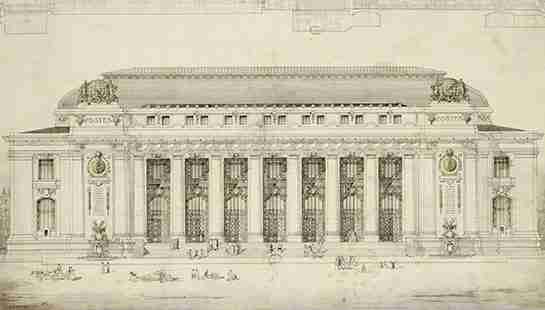A New Book on American Architects at Paris’s École des Beaux-Arts
Many notable Stateside Beaux Arts buildings, while uniquely American, owe their design in large part to a fabled Paris educational institution where architects received rigorous formal training. Next month, Rizzoli will release Americans in Paris: Foundations of America's Architectural Gilded Age, Architecture Students at the École des Beaux-Arts, 1846–1946 ($85, Rizzoli), a captivating volume that offers a look at the curriculum that laid the foundation for some of this country’s most revered architects.
The first American to be accepted to the École, in 1846, Richard Morris Hunt (the brain behind the Statue of Liberty’s pedestal and the fabled Breakers estate in Newport, Rhode Island) led a line of students that included Guy Lowell (architect of Boston’s Museum of Fine Arts), Julia Morgan (the school’s first woman and the designer of Hearst Castle), Charles McKim (of legendary firm McKim, Mead & White, whose creations include New York’s original Penn Station and the Morgan Library), and John Russell Pope (best known for the Jefferson Memorial and the National Archives in Washington).

Authors Jean Paul Carlhian (himself a graduate of the École des Beaux-Arts and a member of the Boston architecture firm Shepley, Bulfinch, Richardson & Abbott) and Margot M. Ellis offer insight into a movement that effectively secured an architectural identity for a relatively young America. The book begins with a chapter on teachings at the École and moves on to individual graduates, notable firms, and competitions. The journeys of the French-trained American architects, and their common decision to return home to work would leave an indelible mark on America’s streetscapes.